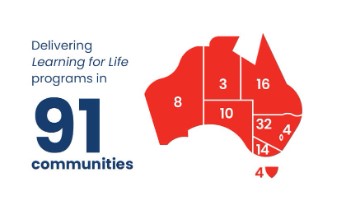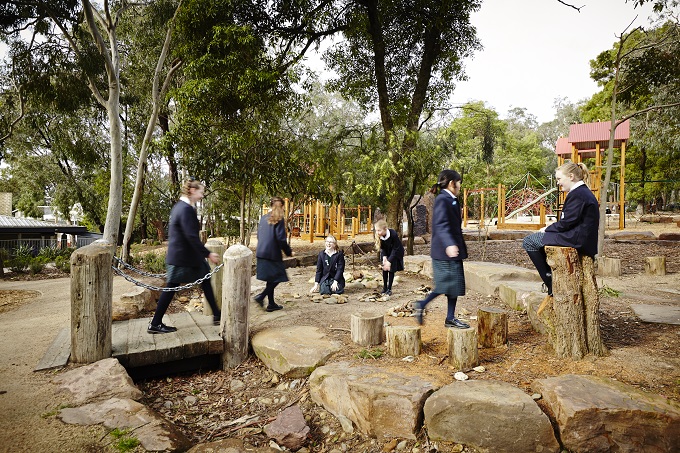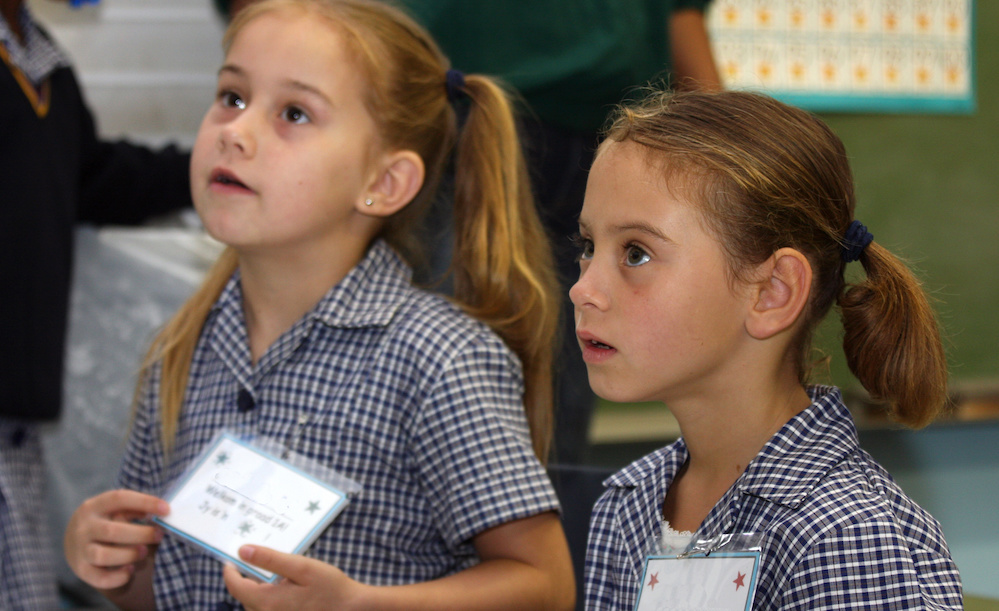
A little over a century ago a group of five businessmen took toys, books and lollies to the 40 children living at the Carlingford Home for Boys. It was Christmas Eve 1922, and when the Matron asked for their names so the boys could thank them for their Christmas gifts, the men famously replied ‘Smith. We’re all Smith.’
Read the latest print edition of School News HERE
This is how the Smith Family was created, a name synonymous in Australia with education and charity. However, how many of us know the full extent of their work, and how can teachers seek assistance on behalf of students?
What is the Smith Family Mission?
Doug Taylor has been CEO of the Smith Family since 2021. ‘I have always been driven by a strong social conscience and belief in the power of education,’ Taylor says. ‘When the opportunity to join The Smith Family presented itself in 2021, I jumped at the chance, in part because I’m the first in my family to receive a tertiary education.’
He explains that in the 1980s, the Smith Family changed its focus from primarily providing emergency relief to families to more directly supporting the education of children who were experiencing disadvantage. ‘Feedback from the families we supported was that they were keen to see a break in the cycle of disadvantage,’ Taylor says.
“We know that education is one of the most powerful change agents, however, when students are experiencing disadvantage, they often become disengaged with school and fall behind their peers in terms of learning outcomes. Our role is to support those students so they can thrive both inside and outside the classroom.” Doug Taylor
Breaking the cycle of disadvantage
Taylor spoke of the stark and inescapable reality facing some students in Australia: “A public education may be a fundamental right in Australia, however, access to the support, resources and essentials that many of us take for granted are privileges not afforded to every student. In an age where there is an ever-increasing reliance on digital learning, access to a home computer and a reliable internet connection have become necessities. The digital divide is one of the most pressing educational challenges for children in low-income households. Currently, three in ten students we support through our Learning for Life program are on the wrong side of this divide.”
With 1.2 million children and young people experiencing poverty in Australia and many more families experiencing the effects of the growing cost of living, charities such as The Smith Family face an uphill battle.
“Our purpose and vision are both straightforward and unapologetically ambitious – to overcome educational inequality caused by poverty and to create in a world where every child is empowered to create their own future.” Doug Taylor
Protecting the tree, building a forest
The Smith Family’s flagship program is Learning for Life, which supports around 65,000 individual students throughout Australia. By providing financial, learning, and personal support to children experiencing disadvantage, the program follows them from kindergarten through to tertiary learning and enables them to remain engaged with their schooling and break the cycle of disadvantage their families have experienced.
One recipient of a Learning for Life scholarship is Emmanouela who recently went to Paris as the youngest member of the Australian Gymnastics Olympics team. Her family shared that without the support of the scholarship program, they would have struggled to support Emmanouela’s gymnastic ambitions and her education.
In addition to programs that focus on the individual, the Smith Family also funds community programs that build a sense of community and belonging.
Learning Clubs which are held outside of school hours, focus on improving both academic and social skills.
The peer-to-peer student2student reading program matches students in Years 3 to 8 with older reading buddies who are at least two years older. Meeting a few times a week, via phone or online, this evidence-based program has been shown to increase reading outcomes in a peer support setting.
SmArts has been designed specifically for high school students with a particular interest or talent in the creative and performing arts. Students gain skills and practical experience, as well as further information about post-school career pathways within the sector.
The Digital Learning Essentials program aims to ensure that every student on the Learning for Life program is equipped with a laptop, home internet and technical support for learning. “I liken digital devices to the “new pens and paper” of our era,” says Taylor. “And thanks to the generous support of donors, the program has successfully provided over 6,000 students with essential digital resources in the past two years and plans to deliver an additional 3,500 devices in 2024.”
How can teachers seek assistance for students?
Taylor explains that The Smith Family is currently working with 91 communities throughout Australia including Western Sydney and the Illawarra regions in NSW, Dandenong and Frankston in Victoria, and Ipswich, Logan and Townsville in Queensland.
At the moment, only students within these communities are eligible for Learning for Life sponsorship.

“These communities have been identified as areas where there is a significant demand for The Smith Family’s programs and presence,” says Taylor. “We work with nearly 800 partner schools around Australia to support those schools and address challenges for students experiencing disadvantaged.”
“Teachers and school welfare teams play a critical role identifying and referring parents or carers whom they think could benefit, and be able to participate in, the Learning for Life program. We work with those parents, carers and students to provide financial, additional learning and personal support,” he adds. “Teachers also identify and refer students to our programs like after-school Learning Clubs, student2student and careers-focused programs.”
“The support of principals and teachers has been critical to the success of our various programs. Their eagerness to assist students experiencing disadvantage and break the cycle of generational poverty is nothing short of inspirational.” Doug Taylor
For information about The Smith Family programs and ways to get involved, visit Australian Children’s Charity Supporting Education | The Smith Family







